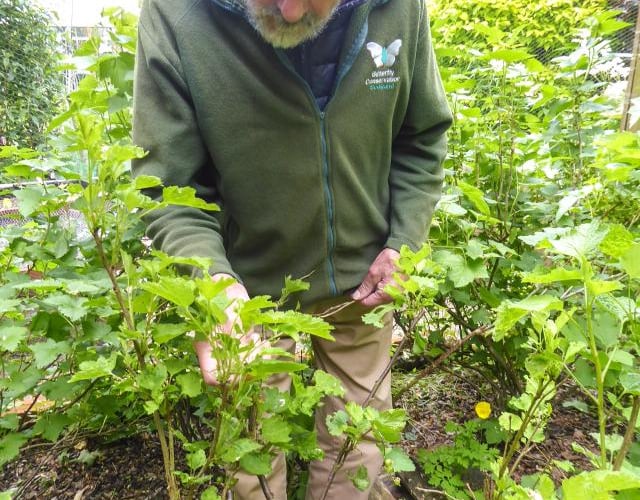To enjoy nature you don’t need to be able to be able to name all the plants and creatures you see! It’s enough to observe the intricacy of a plant and the behaviour of a butterfly as it gathers nectar and the beauty of birdsong.
I have no specialist knowledge or passions for particular flora or fauna. For me, it’s enough to delight in the sights and sounds of the natural world, and to be curious when I see something unusual, and sometimes to question why things are as they are.
I salute enthusiasts with a passion for certain creatures or plant life: those with a deep knowledge in their speciality and who seek rarer species.
Let me tell you an amazing story about a search for an elusive creature called the Currant Shoot Borer moth. This tiny insect is very scarce in Britain, with fewer than 10 colonies. The caterpillars burrow into the shoots of Red Currant, Black Currant and Wild Gooseberry plants, especially beside rivers under a woodland canopy.

Retired doctor Jo Davis from Lanarkshire has had a lifelong love of butterflies and moths. He became a volunteer with national wildlife charity Butterfly Conservation in 2006, shortly before he retired.
In April last year, he joined a trip with other Butterfly Conservation members to see the last known colony of Currant Shoot Borer moths in Scotland. Within a scattering of wild Red Currant bushes in woodland on the banks of the River Tweed.
Inspired by the event, he then walked for miles along the banks of the River Clyde near his home. Searching for Red Currant bushes with signs of the moth's presence, but in vain.
It was only after giving up the quest that he happened to spot one of the tiny black-and-yellow insects on a Red Currant bush in his own garden! He explained: "I was walking past my fruit cages and this pretty little black and yellow moth appeared.”
Jo took a photo and having confirmed its identity, started looking in earnest and spotted several more flitting around. He added: “How absurd not to be able to find it all that time and then find it right under my nose!"
As adult Currant Shoot Borer moths are in flight during May and June. It’s too late to seek an unrecorded colony in our area this year – but who knows?
However, it’s not too late to go out spotting butterflies and moths, especially as the Big Butterfly Count is under way. As reported here a couple of weeks ago, the Big Butterfly Count is an annual “citizen science” activity by the Butterfly Conservation charity.
Which asks us to record the species and numbers of butterflies and moths we see during a 15 minute period. You can submit as many “counts” as you like, in as many locations as you wish, until the event finishes on Sunday, August 4.
Butterflies aside, try to go out and enjoy the natural world this summer. You don’t have to identify the things you see – but it’s a great feeling of accomplishment if you can!
Whether you observe insects, birds or plants, you might just see something unusual if you keep your eyes peeled. Jo Davis’s story of the Currant Shoot Borer moth shows that unusual things might be in plain sight beneath our noses, if only we looked!


.jpeg?width=209&height=140&crop=209:145,smart&quality=75)


Comments
This article has no comments yet. Be the first to leave a comment.